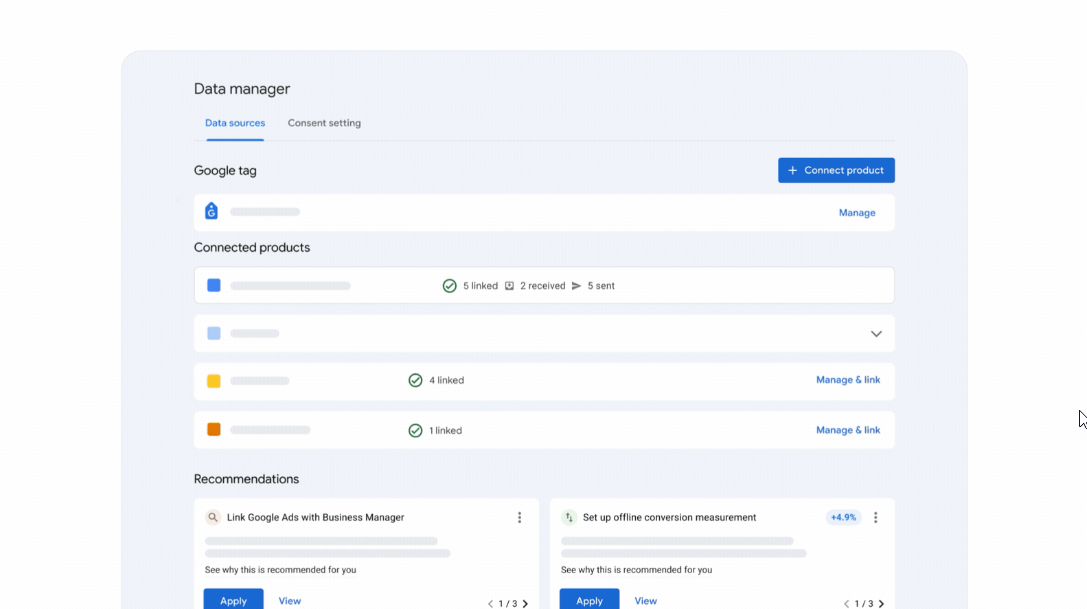During its annual Google Marketing Live event for advertisers, Google announced upgrades to its AI measurement tools, making access easier for small brands.
These updates were shared ahead of time with Search Engine Journal during an exclusive preview event, which showcase Google’s continued investment in providing advertisers of all sizes better visibility into performance, incrementality, and return on ad spend.
Here’s what’s coming for marketers, and why you should pay attention.
Incrementality Testing: Becoming More Accessible
Measurement has always been a pain point for marketers. We spend time and budget driving performance, but often struggle to prove what’s truly moving the needle.
Historically, incrementality testing in Google Ads was only feasible for high-spending accounts, requiring at least $100K in budget to run.
That changed today, as Google is lowering the spend requirement to just $5,000 per incrementality test.
That lowered threshold opens the door for many mid-market (and even smaller) advertisers to start running controlled tests that measure the true lift driven by their ads. Not just looking at conversions that likely would’ve happened anyway.
In addition to the lower threshold, Google is rolling out a new Bayesian-based methodology that increases the chances of getting conclusive results.
Tests can now run as short as 7 days or up to 56, with 28 days considered the current best practice.
With this update, marketers no longer have to rely on directional data or last-click attribution.
They’ll be able to isolate the impact of their Google Ads campaigns and adjust budgets or creative with more confidence.
Cross-Channel Measurement Is Getting Smarter Inside Google Analytics
Another big enhancement is happening within Google Analytics.
Marketers will soon be able to see more comprehensive cross-channel performance (including impressions ) across Google properties and other platforms.
The aim is to help teams better map the full customer journey and more accurately calculate ROI.
While not all of this is live just yet, Google says deeper insights are on the way in the coming months.
This should be particularly useful for brands running Performance Max or upper-funnel campaigns across multiple surfaces.
Visibility into pre-click data has historically been limited, so any lift in impression-level reporting across channels is a step forward.
Data Manager: A Central Tool For First-Party Data Activation
Google is also introducing Data Manager as a centralized tool to help marketers collect, store, and activate their first-party data . It’s got all the existing privacy protections baked in.
With the rise of privacy regulations and cookie deprecation looming, brands have been scrambling to figure out how to make better use of their owned data.
Data Manager acts as a one-stop shop, using confidential computing to ensure sensitive data stays protected and is only used for authorized purposes.
 Credit: Google
Credit: GoogleMarketers can expect upcoming features like data strength recommendations, which will help identify gaps in your data strategy and offer actionable ways to improve it.
To streamline things further, Google is also launching a new Data Manager API. This update consolidates multiple APIs into a single schema, helping developers connect audience and conversion data more easily across Google Ads, GA4, and GMP.
This might not be something every marketer will use directly, but it has major implications for teams that rely on agency or partner integrations to power their campaigns.
It reduces the technical lift required to activate more first-party data signals across platforms.
Why Marketers Should Pay Attention
One of the most notable parts of this update is who these tools are built for.
In the past, many of Google’s advanced measurement tools were only accessible to advertisers with deep pockets and large internal data teams.
That left small-to-mid-sized businesses at a disadvantage when it came to proving performance or scaling their investment.
These new AI measurement tools show a clear move toward making enterprise-grade measurement more attainable for all.
For marketers under pressure to drive measurable results without doubling spend, that’s welcome news.
We’re also seeing Google start to shift more clearly toward cross-channel, privacy-safe measurement with a bigger emphasis on first-party data.
Even with all the change in direction of third-party cookie deprecation (and reversal of that decision), these tools seem to be solid building blocks that marketers can use as privacy regulations continue to adapt across the world.
Looking Ahead
The latest updates from Google Ads mark a meaningful shift toward making AI-powered measurement smarter, faster, and more accessible.
From more affordable incrementality testing to a consolidated way to activate your first-party data, these tools promise better insights without the enterprise-level budget.
Marketers still need to approach these tools with a critical eye. AI-powered doesn’t mean hands-off.
You’ll want to validate the data assumptions being used, and stay involved in shaping your own measurement strategy.
Now, it feels like marketers with modest budgets aren’t stuck on the sidelines.
Which of these new measurement tools are you looking forward to trying within your accounts?

